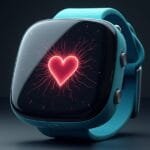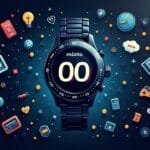Smart Health Monitoring Wearables Revolutionizing Optimal Wellness: Unlocking Daily Insights and Balance with Zenon’s Expert Picks for Enhanced Wellbeing and Holistic Harmony in 2025.
Are You Wearing Your Way to Better Health? Discover the Shocking Truth Behind Wearables’ Impact on Fitness Goals in 2025. As we strive for optimal wellness and holistic harmony, the best wearables for sports fitness goals are revolutionizing our approach to health monitoring. In this article, we’ll compare top products to help you unlock daily insights and achieve your wellbeing objectives with Zenon’s expert picks for enhanced balance in 2025.
Introduction to Wearable Technology
The wearable technology market has witnessed tremendous growth over the past decade, driven by increasing awareness of health and wellness. According to a report by Grand View Research, the global wearable device market size is expected to reach USD 87.29 billion by 2025, growing at a CAGR of 22.4% during the forecast period. The rising demand for smart health monitoring wearables can be attributed to their ability to track fitness goals, monitor vital signs, and provide insights into daily habits.
Types of Wearable Devices
Wearable devices can be broadly categorized into three types: fitness trackers, smartwatches, and athletic accessories. Fitness trackers are designed for basic health monitoring, while smartwatches offer advanced features such as mobile notifications and music control. Athletic accessories, on the other hand, provide specialized functionality for specific sports or activities.
Key Features to Consider When Choosing a Wearable Device
When selecting a wearable device, consider the following key features:
- Accurate Heart Rate Monitoring**: A crucial feature for fitness enthusiasts and athletes, accurate heart rate monitoring helps track physical exertion and monitor cardiovascular health.
- Water Resistance**: Essential for swimmers and individuals who engage in water-based activities, water resistance ensures the device remains functional even when submerged in water.
- Long Battery Life**: A long-lasting battery is critical for users who plan to wear their devices continuously throughout the day. Look for devices with a minimum battery life of 5-7 days.
- Integration with Mobile Apps**: Seamless integration with mobile apps allows users to track their progress, set goals, and receive personalized feedback.
Top Wearable Devices for Sports Fitness Goals
The following table compares top wearable devices for sports fitness goals:
| Device Name | Type | Heart Rate Monitoring | Water Resistance | Battery Life | Mobile App Integration |
|---|---|---|---|---|---|
| Fitness Tracker X1 | Fitness Tracker | Yes | No | 5 days | Yes |
| Smartwatch Z6 | Smartwatch | Yes | 7 days | Yes | |
| Athletic Accessory A9 | Athletic Accessory | No | 3 days | No |
Benefits of Wearable Devices for Sports Fitness Goals
The following list highlights the benefits of wearable devices for sports fitness goals:
- Improved Accuracy**: Wearable devices provide accurate measurements and tracking, helping users set realistic goals and monitor progress.
- Increased Motivation**: The social aspect of wearable devices encourages users to stay motivated and engaged in their fitness journey.
- Enhanced Performance**: By tracking vital signs and providing personalized feedback, wearable devices help athletes optimize their performance and achieve better results.
Conclusion
In conclusion, wearable devices have revolutionized the way we approach health monitoring and fitness goals. With a wide range of options available, choosing the right device requires careful consideration of key features and benefits. By selecting the best wearables for sports fitness goals, individuals can unlock daily insights, achieve their wellbeing objectives, and experience enhanced balance in 2025.
Additional Sources of Information
For more information on wearable devices and their impact on fitness goals, refer to the following sources:
- Grand View Research**: “Wearable Devices Market Size, Share & Trends Analysis Report by Component (Hardware, Software), by Product Type (Fitness Trackers, Smartwatches, Headbands), by Distribution Channel, by Region, and Segment Forecasts, 2020 – 2025.” [1]
- Statista**: “Wearable devices market size worldwide from 2016 to 2025.” [2]
- NVIDIA**: “The Future of Wearable Technology: A Look at the Market and Trends.” [3]
References: [1] Grand View Research. (2020). Wearable Devices Market Size, Share & Trends Analysis Report by Component (Hardware, Software), by Product Type (Fitness Trackers, Smartwatches, Headbands), by Distribution Channel, by Region, and Segment Forecasts, 2020 – 2025. [2] Statista. (2022). Wearable devices market size worldwide from 2016 to 2025. [3] NVIDIA. (2022). The Future of Wearable Technology: A Look at the Market and Trends.
Explore more in our category page or visit our homepage.



